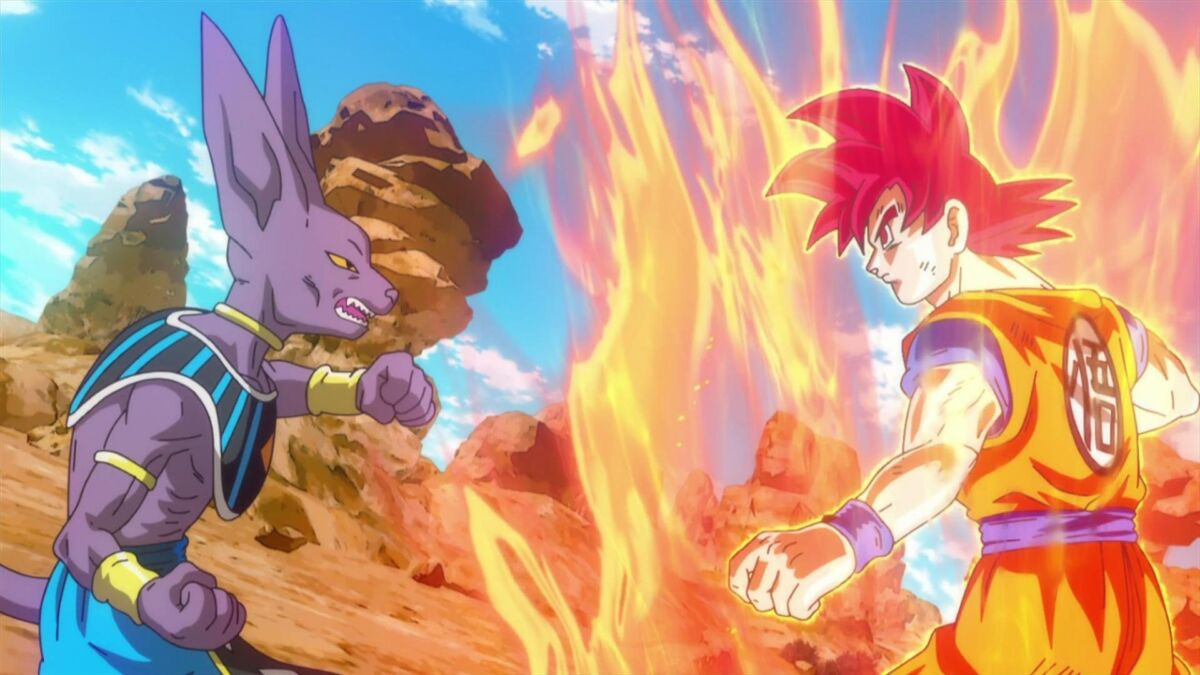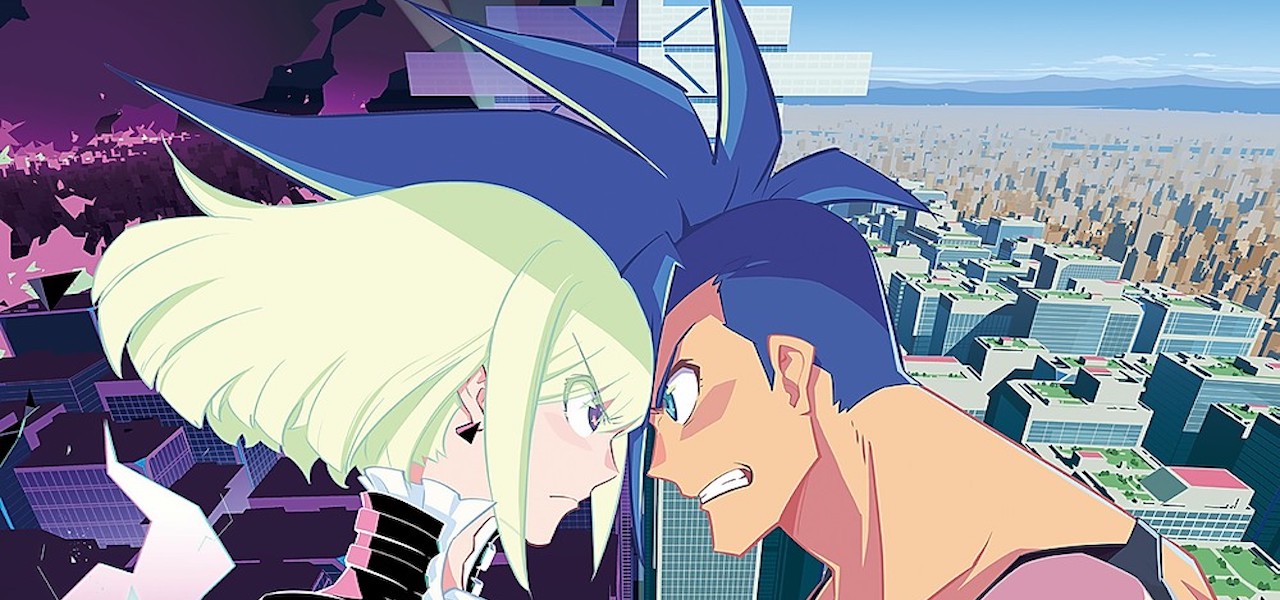

“It’s Time That People Really Start Taking This Seriously”: Anime Is Booming At The U.S. Box Office
At a time when many films are struggling to find success at the North American box office, Japanese animation is experiencing a boom in popularity like it’s never seen before at U.S. cinemas.
Only six anime features have ever grossed more than $30 million at the U.S. box office, and four of those came out within the past three years: Dragon Ball Super: Broly (2019), Demon Slayer the Movie: Mugen Train (2021), Jujutsu Kaisen 0 (2022), and Dragon Ball Super: Super Hero (2022).
This week, One Piece Film Red opens in the U.S. after an incredible domestic run in Japan where it’s the year’s highest-grossing film and the ninth highest-grossing film of all time at 17.74 billion yen ($127 million). One Piece’s U.S. distributor Crunchyroll believes the film will be a hit in the U.S. and has put the weight of its marketing department behind the film.
To examine the causes, impact, and sustainability of the anime boom in the U.S., Cartoon Brew spoke with Adam Zehner, senior vp, global acquisitions and global content planning, Crunchyroll (Demon Slayer the Movie: Mugen Train, Dragon Ball Super: Super Hero); Chance Huskey, director of distribution at GKIDS (Belle, Goodbye, Don Glees!); and Miki Niina, vp of distribution at Eleven Arts (Poupelle of Chimney Town, Penguin Highway).
A NEW STANDARD
According to Miki Niina, a new standard for Japanese animation at the U.S. box office has been set over the past several years.
“Films based on some of the most popular anime series can compete with major Hollywood films now,” she says. “That didn’t happen often a decade ago.”
In fact, until recently, Pokemon was the only anime franchise to gross more than $20 million domestically with one of its films.
More North American exhibitors and box office analysts should take note of anime’s increased popularity among audiences, says GKIDS’s Chance Huskey.
“These films are doing real studio numbers now and I don’t think people are giving them enough credit, especially box office reporters,” he says. “The narrative seems to be ‘Oh those anime folks are at it again,’ but it’s time that people really start taking this seriously. These movies are making more than a lot of big-name Hollywood studio films.”
Contributing to the new standard, says Zehner, is an “intersection of a few different things changing in the industry. First, there is phenomenal talent in Japan. Then you’ve got a really passionate fanbase. And there are also larger shifts in the entertainment industry. These all sort of collided in a very favorable way for anime.”
AN INDUSTRY SHIFT
Huskey explains that last year marked a major turning point for anime in the U.S., after Sony acquired Crunchyroll and merged the streamer-distributor with Funimation.
“Sony consolidating Funimation and Crunchyroll helped clear up a backlog or delay between the Japanese and U.S. markets,” he says, pointing out that almost overnight, catalogs that were once difficult or impossible to access for fans in the U.S. became available.

“I think that consolidation on the corporate side mirrors the broad accessibility of anime,” he says. “Fans who used to have to dig to find even basic information about franchises now had everything immediately available with a simple trial to a streaming platform.” That’s an important consideration, as many anime IPs are decades old and already have hundreds of hours of lore in their canons.
Speaking from the inside, Zehner recalls, “I’ve been at Funimation and Crunchyroll now for 18 years, and it’s been exciting to watch the growth in anime. We always wanted to support it, but we didn’t necessarily have the financial capabilities to do so. Now, as anime is evolving, as more fans are finding anime, it’s given us the ability to also spread our wings and really support a wider variety of content.”

WINNING OVER EXHIBITORS
Zehner recalls, “In the past, there were a lot of gatekeepers. Whether it was a programmer at a tv station or someone at a theater chain, there was a time when those people wouldn’t consider anime because it was not something they were familiar with, even if the audience was. To those people, it wasn’t proven content, so without a history and numbers to show that anime could be successful, they didn’t get involved.”
This created a catch-22 for anime distributors. Exhibitors wouldn’t show the films because there wasn’t sufficient data to prove that anime could find success at the U.S. box office, but it was impossible to generate that data without getting films into the theaters. Things changed when streaming gave people direct access to anime franchises, and viewer data could be collected that proved, beyond a doubt, a significant audience demand for Japanese animated content.
“That was an incredibly important shift for anime because it took away some biases that people had,” says Zehner. “It’s not that exhibitors didn’t want to believe in anime, they just didn’t have enough data to do so.”
He recalls a time when “it was very hard to convince theater chains that anime fans would show up. I remember when we launched Dragon Ball Z: Battle of Gods, the projections from theater chains were not that high. Eventually, we did about $2.55 million and they were amazed.”
Now, that $2.55 million looks quaint when compared to what the Dragon Ball franchise can accomplish at U.S. cinemas.

DIPPING A TOE INTO THE MAINSTREAM
Convincing exhibitors to host anime was made all the more difficult due to cultural biases, argues Niina. “There was a time when anime was seen as otaku or nerd culture because it was something only certain types of people watched. However, when a variety of content became available, the bias started wearing off.”
Now, she says, “Theaters and exhibitors have seen the recent success of anime and started booking more anime films.”
Husky agrees, “Traditionally, anime was thought of as counter-programming. Because of various fluctuations in the market recently, it’s moved more into the mainstream.”
FOR THE FANS
Of course, behind any commercial push made by distributors and exhibitors, there must be a desire among audiences to watch the films. To that end, distributors and a few willing exhibitors have started programming can’t-miss event screenings, while also screening the films in more cinemas than ever before.
“The name of the game for anime is accessibility; we have to be as accessible to as many people as possible,” says Huskey. “I think that’s why you see a lot of event-style releases for anime, or why it’s still sometimes treated as alternative content by exhibitors. The idea is often that you play a reduced schedule, but that allows you to make a big impact over a short time. It’s a way of maximizing and concentrating that audience into hours and days that work well for exhibitors.”
“There is a new term that’s come up for this style of screening called a ‘cheer screening,’” he says. “We first experienced it with Promare back in 2019. Fans of Studio Trigger and the film’s director Hiroyuki Imaishi were bringing lights and noisemakers and shouting at the screen. And that’s the kind of magic we hope to capture with certain films that have a festive atmosphere.”

According to Zehner, there is a historical reason for anime films to embrace the event screening model. In decades past, anime films rarely played in theaters for more than one or two weeks, conditioning fans with an impulse to see the films as soon as they become available. Echoes of that conditioning persist today, and Zehner says that’s one reason so many anime films generate the bulk of their box office hauls in the first week or two of release.
“Historically, you often only had one or two days to come see the films,” he recalls. “I think that sense of urgency is great, but it’s a model that lends itself to a very frontloaded release schedule.”

INDIE ANIME
While recent trends suggest that big IP anime features should be aiming higher than ever at the U.S. box office, distributors agree that the success of franchise films should help the prospects of indie and auteur anime features as well.

“Major existing IPs can easily make top box office numbers, and that can definitely be a key to the theatrical success of other anime films,” says Niina. “Major IPs are often the first anime that new fans will watch. However, that doesn’t mean indie or auteur anime can’t be successful.”
Huskey agrees but says it’s still early days. “We’ve only just begun putting out a lot of [indie] content this year, so it’s still a bit tricky to navigate. But I take heart in the idea that the audience is getting curious about discovering these films.”
Niina acknowledges the need to develop a custom marketing plan for indie titles: “Indie anime films require a slightly different take and creativity from the distributors in order to be promoted successfully. Different steps must be taken. As a distributor, a key to success is finding the right promotional angle and executing those ideas. If those match well, anime films beyond just the major IPs stand a chance at succeeding at the U.S. box office.”

Pictured at top: One Piece Film Red





